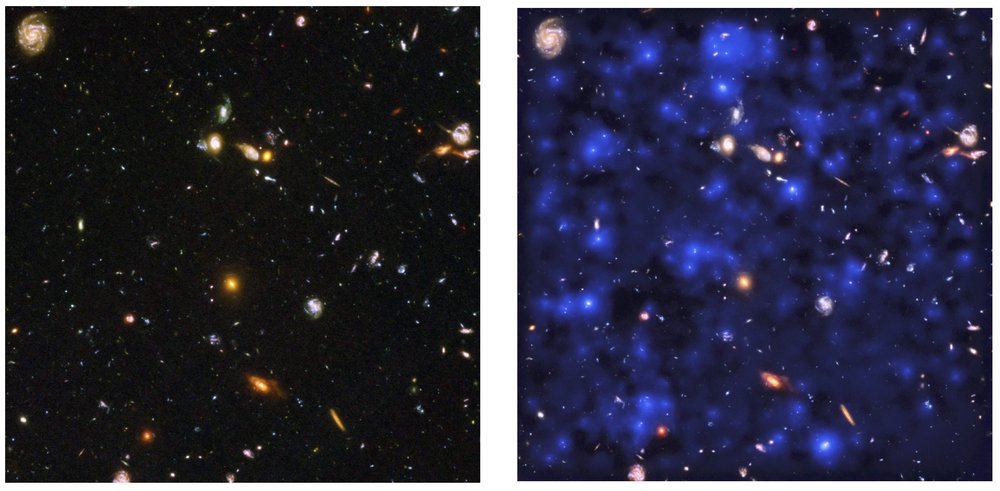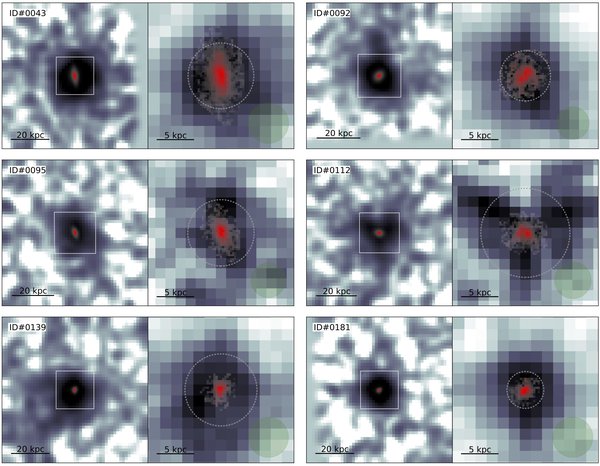Observations of the Circumgalactic Medium
Lyman-α haloes around high-redshift galaxies
In the young universe, star-forming galaxies produce copious amounts of Lyα radiation powered by young massive stars. Such Lyα emitters (LAEs) are typically tiny, with stellar masses and sizes 1--2 orders of magnitudes below the Milky Way -- comparable to present-day dwarf galaxies. Our 27 hour deep exposure with MUSE in the Hubble Deep Field South revealed that these galaxies are essentially always surrounded by very extended Ly emission envelopes (Wisotzki et al. 2016). The key to this breakthrough observation is the order-of-magnitude increase in the achieved surface brightness sensitivity facilitated by MUSE, compared to conventional narrow-band imaging, and the multiplexing capability of the instrument combined with very long exposures.
The detected extended Lyα emission is always roughly symmetric and approximately follows an exponential surface brightness distribution, with scale lengths of typically one to a few kpc. While these haloes are thus quite modest in their absolute sizes, the corresponding sizes in the rest-frame UV continuum (which outlines the distribution of young stars) are tiny in comparison, and the observed Lyα haloes are often a factor 10 bigger than the galaxy in the continuum. We found interesting correlations between the Lyα spectral shapes and the properties of the haloes, highly suggestive of resonant scattering of Lyα photons in neutral H I surrounding the galaxies as the main process leading to the observed extended structures. See also our follow-up study with a much larger sample in Leclercq et al. (2017).
Nearly all the sky is covered by Lyman α emission from high-redshift galaxies
Under this title we published a paper in the interdisciplinary journal Nature (Wisotzki et al. 2018) that extended our study of low-surface brightness Lyα emission towards unprecedented levels of sensitvity. By stacking several tens of the faint LAEs in our ~30h MUSE exposures of the Hubble Ultra-Deep Field and the Hubble Deep Field South we showed that the sky as seen with imaginary “Lyman-alpha goggles” is actually covered with a faint glow of cosmic hydrogen surrounding the galaxies. This finding can be turned into an important astrophysical insight by statistically relating the observed cross-section of extended Lyman-alpha emission to the cosmic reservoirs of atomic hydrogen around and between galaxies, previously detected only by absorption line spectroscopy. Our observations make this component of the universe visible, for the first time. We now see that the circumgalactic gas itself is shining; in fact pretty much all of the known atomic hydrogen (at these redshifts) is emitting light in the Lyman-alpha line, and we can detect that light.

